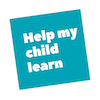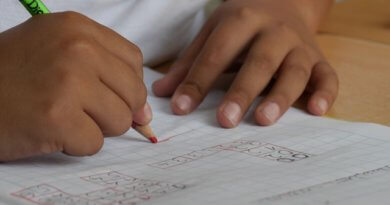Developing Strengths in Children with Learning Disabilities
In our pressured world, developing strengths in children with learning disabilities is important, but often misunderstood. It turns out that we need some context and education to redefine strengths. But once you adopt a strength-based mentality toward your child, everything changes.
Many parents of now-grown LD children remember feeling terrified that their children—now graduated from college, with careers, off getting married—would ever make it in the world. Now that they look at their grown children, the terror and fear seems so over the top, yet each generation brings another group of parents, just as scared.
And at least part of that fear is visible when a parent says “And how can I find my child’s gift? My child isn’t good at anything at all!”

Dr. Ned Hallowell , an LD thought leader who has both ADHD and dyslexia, speaks directly to parents who are worried that their children aren’t demonstrating measurable gifts, early.
“The predictors of living the best kind of life are not the grades but the attitudes developed during childhood. Attitudes like: confidence; enthusiasm; a strong interest in something; optimism; the ability to persist in the face of disappointment; the ability to ask for help when you need it and give help when it is needed; spunk; a sense of humor; courage; ambition; and the ability to take responsibility and to do the right thing when no one is looking.”
Hallowell says that these are the attitudes that actually predict doing well in life. He also says that EVERYONE can develop these attitudes, and he challenges parents to raise children by identifying strengths in children with learning disabilities, and developing positive attitudes and skills.
Hallowell goes on to name what he calls the most dangerous learning disabilities.
“What truly holds people back in life, is not ADHD or dyslexia. The dangerous disabilities are fear, shame, loss of hope, broken confidence, shattered dreams, and a feeling of being less-than. Those are the disablers.”
Hallowell says that without meaning to, teachers, parents, doctors and other professionals instill these disablers every day – in the name of helping children.
Hallowell’s method of dealing with LD identifies talents and strengths first, and only then looks at what is getting in the way of developing talents and strengths. He sees every LD child as a champion-in-the-making, and feels that it’s up to adults to help each child bring forward their champion.
Re-thinking the Definition of “Strength”
But how do you do it? One way is by re-thinking how you define a strength, and what “strength” means. For this, let’s look to a school in New Zealand called the George Street Normal School. (“Normal” means that the school is a model for teaching in New Zealand.) This school employs a strengths-based teaching approach, and they think about strengths in a totally different fashion.
The George Street Normal School has built their entire educational model around strengths. As a result, they get more engagement and more achievement from their children. This is how they define strengths:
A strength is something that you are naturally drawn to, repeatedly involve yourself in, and are good at. When you engage one of your strengths, it might give you energy, make you more interested, make you feel powerful, or simply make you happy.
The George Street Normal School identifies three types of strengths:
- Action strengths – things you do
- Character strengths – how you are as a person and your role in the world
- Thinking strengths – how you think
At the school, it’s a child’s job to identify their own strengths and every child has a personal goal with the school to develop at least one of their strengths during the year. This “getting to know themselves” means that children develop metacognitive skills that they will use for the rest of their lives,
In America, children with learning disabilities are taught to know their deficit-based profile, not their strengths. We need to work differently, in order to strengthen our children.
Understood identifies strengths as being
- character,
- social,
- language,
- literacy,
- math and logic, and
- study skills.
Tools for Identifying Strengths in Children with Learning Differences
The Understood website has a quiz to help identify which strengths your child has.
The Structure of Intellect program tests children on both strengths and weaknesses. SOI is a methodology used by professionals to measure intelligence, and then to help people strengthen their ability to think. Here is the Structure of Intellect website, and here is a summary of what’s inside of the Structure of Intellect theories. Vicki Bockencamp is a professional who gives the SOI testing and works with it.
Dr. Lea Waters has written a book called The Strength Switch. It explains how parents can use strength-based parenting techniques to develop resilience and optimism in their children. Here’s a quiz that you can take, to identify how well you work with your child’s strengths!
We’re continuing to look for the best ways to identify your child’s strengths. Sign up for our email list to get additional information on strength-based parenting and teaching.
What Happens When Children are Taught with a Strengths-based Approach?
Instead of just using the “fail first” or “deficit” model of teaching, this is what the school says: We want children to leave our school knowing more about their strengths than anyone else and leave school happy with who they are. George Normal school has very high achievement scores, and is filled with happy, motivated children. The school says:
Student well-being must accompany student achievement in order for children to be successful at school. Children who have regular opportunities to develop their strengths are more likely to flourish.
Developing and Nurturing Your Child as a Unique Person
Around 8% of the children in our schools have learning differences. That’s a significant number. Those children are typically quite bright — but think or learn in nonstandard ways. That number isn’t going down, either. Debbie Reber, of Tilt Parenting, has a Ted talk where she says “Hey, these kids aren’t going away. Why don’t we make room for them in our system?”
Debbie talks about putting her son into three different schools before finally homeschooling. And then she talks about how her entire family needed to recalibrate what they expected, before they could accept her son and how his brain works.
She also talks about how many of her son’s personality foibles match those of very successful people. In other words, his type of brain works well as an adult (when he can maneuver around weaknesses), but not as a child. Lesson? Protect your child and let them grow.
Give your child room. Don’t worry if they don’t go to the dance, or if they aren’t in the orchestra. Help them find their own strengths and paths. Trampolining, bug collecting, cooking, babysitting. Almost any genuine childhood interest can turn into skills for the adult world.
Learn about your child so that you can bring your own opinion to the table when you talk with teachers and school administrators. Remember: chances are that they have never had a class in dealing with a child like yours, so you’re the bearer of the knowledge.
Additional Reading:
As Amazon affiliates, we earn a small commission if you purchase from a link in this blog.
Your Child’s Strengths: Discover Them, Develop Them, Use Them
Jenifer Fox is an educator who has written about developing children’s strengths in activities, relationships, and learning. Her book includes workbook tools and an affinities curriculum that Fox has implemented in her own school.
The quotes we’ve used in this post are from Ia perspective-changing essay called “Their Beautiful Minds.”that Dr. Hallowell wrote several years ago, (It’s now unpublished, but here’s a copy.) After reading this essay, I went back and rewrote Fine Until Kindergarten: A Parent’s First Guide to Learning Disabilities to fully support his mindset.











Pingback:Learning About Different Brains - From Their Owners - Help My Child Learn
Pingback:Journey 1: Identify Your Child's LD Challenges - Help My Child Learn
Pingback:Raising an LD Child With the Qualities for Success - Help My Child Learn
Pingback:Creating and Using a Learning Profile for Your Child - Help My Child Learn